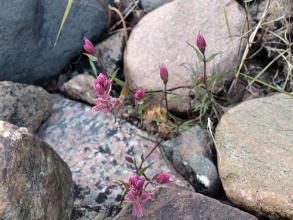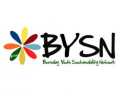Blog Post: CREATING A SUSTAINABLE HABITAT

CREATING A SUSTAINABLE HABITAT: PROTECTING BIODIVERSITY IN A REMEDIATION PROJECT
Since ancient time, humans have depended on various ecosystem services, such as food, clean water, construction materials, medicinal ingredients, pollination and recreation. These vital services are only available to us because there are millions of species connected to each other in various ways and creating different ecosystems which sustain human life.
This is biodiversity. Unfortunately, overall biodiversity on our planet is declining rapidly. This undermines the stability and resilience of ecosystems and may have a drastic impact on our wellbeing.
WHY IS BIODIVERSITY IN DECLINE?
One of the main drivers for the declining global biodiversity is a loss of natural habitats due to human activities, such as agriculture, industry and infrastructure. Environmental remediation can slow down biodiversity loss by recovering or significantly improving degraded, damaged or destroyed ecosystems.
CASE STUDY: BIODIVERSITY AT ABANDONED MINE SITES
I’m part of a team that is responsible for remediating 37 uranium mine and mill sites, a project called Project CLEANS(Cleanup of Abandoned Northern Sites). The sites were used for uranium exploration and extraction in the early 1950s and were mostly abandoned by the mid-1960s with little to no remediation.
As a result, the wildlife habitat was significantly altered. The affected sites not only pose different hazards for the environment and surrounding communities, but also have low biodiversity and poor appearance.
Our team is in charge of the impact assessment, finding ways to improve on-site environmental conditions and implementing other remediation activities. We remove the barriers preventing local wildlife from using the sites and help foster biodiversity growth in the area.
Sustainable remediation
Remediation activities can have negative impacts on wildlife and vegetation. Construction at site can deteriorate aquatic habitats, disturb wildlife breeding periods or destroy rare plant species and migratory bird nests.
A sustainable approach to remediation focuses not only on the final site condition, but also on properly planning and implementing environmental protection throughout the entire remediation process.
Environmental surveys and monitoring
Environmental protection planning for the Project CLEANS team always starts with wildlife and vegetation surveys in an area affected by remediation activities. Environmental surveys are performed by professional biologists and comprise an inventory of valuable species present in the area and determine how remediation may impact local wildlife and their habitat.
Based on these surveys, we develop corresponding mitigation measures and wildlife protection plans to protect rare plants.
In some cases, destruction of rare species is unavoidable (e.g., they grow in a contaminated area which must be cleaned up). In this case, an additional risk assessment is done to estimate the impact and how it compares to the remediation benefits.
We work with environmental monitors for large-scale remediation projects to ensure effective biodiversity protection during remediation activities. The environmental monitors are responsible for monitoring wildlife activities in the area, such as migratory bird nesting or breeding habitats. They also provide guidance on site clean-up in case of a spill.
I think the most important role of environmental monitors is to provide on-site workers with information about local wildlife and vegetation, and what they should do (or not do) to protect the local environment.
Using the right revegetation techniques
The final stage of site remediation is revegetation. The goal of revegetation is to create a habitat suitable for local wildlife. Using proper revegetation techniques are key for revegetation success. SRC’s remediation team use passive and active revegetation techniques.
Passive revegetation is based on creating favourable conditions for site recovery without additional planting or soil treatment. For example, small sites with favourable soil conditions can recover quickly on their own. On the other hand, recovering large areas with poor soil conditions may require extensive soil treatments and planting.
When active revegetation is required, selecting proper plant species should be considered based on the ecosystem. In the past, many revegetation projects used aggressive exotic species grown rapidly in open areas. This approach provides fast visual results, but is not sustainable at the ecosystem level.
Exotic species can not only prevent native vegetation from growing in the area, but they can also spread to competing native plants in neighbouring ecosystems. A shift in the vegetation community could affect local insects, birds and mammals whose survival depends on local plants. A sustainable approach to site revegetation requires planting native plant species.
Choosing the right seeds
Seed mixtures must address the diverse needs of local wildlife. Our seed mixtures always include flowering plants to support local pollinators. They also include nitrogen fixing plants which have a positive impact on soil biota, increase soil nutrient and organic matter content, improve soil structure by their root system and create favourable conditions for establishing other plant species. Adding grass species to the site attracts geese, moose, rodents and seed eating birds.
Another challenge is finding the right density for seeding. A cover that is too dense with several native plants can prevent us from introducing new plant species to the site. While a cover that is too sparse may compromise erosion control and the ecosystem may take too long to recover. Careful planning of what to (and how to) plant on a site is essential for promoting local biodiversity.
When I completed revegetation at my first site, I was amazed to see how our efforts boosted biodiversity there. I remember the site before remediation when it only had a few dying plants and little signs of wildlife.
Ten months after revegetation, there were many insects, birds and mammals who took immediate advantage of the improved site conditions.
This was one of the most exciting experiences in my life, as I could see the results of the team’s contribution in protecting regional biodiversity.
Planning before the work starts
Remediating a contaminated site may have positive and negative impacts on biodiversity. On one hand, remediation is intended to promote biodiversity by improving conditions and creating wildlife habitat on contaminated sites.
On the other hand, it may have a negative impact on local species. This can be prevented by properly planning and implementing environmental protection measures, and through proper revegetation planning.
If remediation is completed in a responsible and sustainable way, it will help recover local biodiversity without compromising ecosystem integrity.
Category:


































